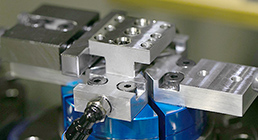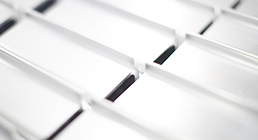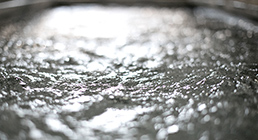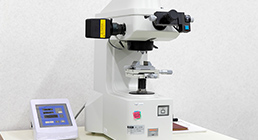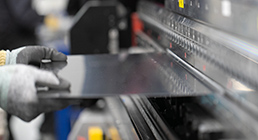Surface treatment
Stainless-steel surface treatment
We offer seven different types of surface treatments for stainless steel to meet your needs.
Stainless steel is an excellent material not only for its corrosion resistance but also for its heat resistance, workability, strength, and appearance.We enhance the quality of stainless steel through various surface treatments while taking advantage of its characteristics.
Electrolysis polishing
By applying a positive voltage to stainless steel in a mixed solution of acids consisting mainly of phosphoric acid, micro-peak of the rough surface of stainless steel are preferentially dissolved.It improves corrosion resistance and provides smooth and glossy surface.
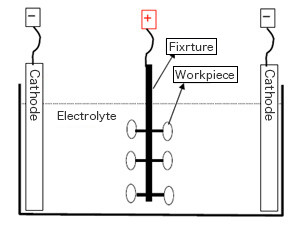
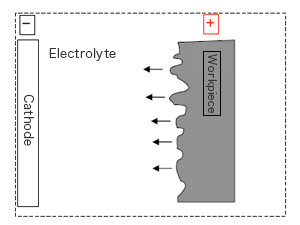
Features
Stainless steel’s inherent corrosion resistance can be achieved by removing contamination and foreign substances from the surface to create a smooth surface resistant to stains.In addition, the corrosion resistance of electropolished stainless steel becomes higher than that of the base material because the chrome-rich oxide layer grew on the surface without generating an altered layer or causing abrasive grains or compounds sticking to the surface.
Even for those products with complex shapes and the inside of containers, which are difficult to polish mechanically, electropolishing makes it relatively easy to polish and micro deburring.However, electropolishing alone cannot removes large size irregularities (such as undulations) and thus cannot produce a perfect mirror finish gloss.In order to obtain a smooth surface, mechanical polishing is performed before electropolishing.
| Beneficial impact | Improvement of gloss, corrosion resistance, appearance and washability |
|---|
Examples of utilization
The stainless steel is immersed in a mixed solution of nitric acid and hydrofluoric acid to dissolve the surface. It helps to clean the surface by completely removing contamination, oxide layer and welding scale.
Pickling
The stainless steel is immersed in a mixed solution of nitric acid and hydrofluoric acid to dissolve the surface. It helps to clean the surface by completely removing contamination, oxide layer and welding scale.
Features
Pickling, in contrast to electropolishing, produces foggy surface with reduced gloss.The surface becomes completely clean, and a new natural oxide layer is formed eventually making it more resistant to corrosion than before.It can also be used to improve functional properties such as anti-reflection and smoothness of the surface.
Examples of utilization
Stainless steel containers, medical instruments, ornaments, stainless steel parts for construction, water purifier parts, descaling of welds, removing oxidized scale from annealed products, etc.
Passivation treatment
Stainless steel is treated with a special solution to dissolve and remove foreign matter (e.g. iron) attached to the surface at the time of machining.In addition, the chromium component on the stainless steel surface is concentrated to form a stable oxidized layer, resulting in a highly corrosion-resistant surface.
Features
The dissolution of stainless steel by the treatment is minimal, and there is almost no change in dimensions or surface condition (gloss and roughness).Especially in the treatment of containers and piping parts used for alcoholic beverages, it minimizes the elusion of iron ions into the beverage and prevents the deterioration of taste.
Normally, stainless steel products are passivated with just the degreasing process.For parts that have scaled from welding, passivation is performed after removing the scale by pickling.However, in this case, it should be noted that the gloss of the surface will change from the bare metal.
| Beneficial impact | Improvement of corrosion resistance |
|---|
Examples of utilization
Stainless steel containers, medical instruments, beverage containers, etc.
TF treatment (special passivation treatment)
The chrome-rich oxide layer is formed on the surface of stainless steel to significantly improve corrosion resistance.This is our unique treatment technique that greatly improves the resistance to saltwater.
Analysis results of products treated with TF treatment
| Chemical element | Bare metal (w/w%) | After TF treatment(w/w%) |
|---|---|---|
| Iron | 75.94 | 39 |
| Chrome | 13.14 | 25.09 |
| Oxygen | 2.52 | 33.32 |
| Carbon | 6.78 | 1.28 |
Result of surface analysis by scanning electron microscope (Comparison of SUS440C bare metal and after TF treatment)
The ratio of chromium and oxygen to iron increases significantly.
Features
When applied to stainless steel parts used in the ocean, this treatment has a tremendous effect on corrosion resistance.The dimensional change due to this treatment is less than 0.5 microns, and it can be used for precision parts.
TF treatment provides the same color as normal colored stainless steel without sacrificing corrosion resistance.However, when various materials are combined, such as bearings, the color may vary depending on the part or material lot.It is also possible to provide an almost colorless treatment by thinning the oxdized layer.
| Beneficial impact | Improvement of appearance by coloring and corrosion resistance |
|---|
Examples of utilization
Reel bearings, bearings requiring salt water resistance, fishing hardware, construction hardware, automotive parts, etc.
Chemical oxidation for coloring stainless steel
A transparent oxide coating is developed on the surface of stainless steel which changes the surface to vivid color.
Color samples

| Metal | Colors | Remarks |
|---|---|---|
| Martensitic stainless steel | Black | Steel types that do not contain nickel, such as SUS 420 and 440 |
| Ferrite stainless steel | Blue, gray, black, gold, magenta and green | Steel types that do not contain nickel, such as SUS 430 The color tone is darker than austenitic stainless steel. |
| Austenitic stainless steel | Blue, gray, black, gold, magenta and green | Steel types that contain nickel, such as SUS 304 and 316 |
Features
The path of the light changes depending on the direction of light incidence or the direction of view, creating a subtle change in the color tone.This gives the surface a depth of color that cannot be achieved by painting.The color is generated by an ultra-thin, transparent oxide coating, so you can see the the surface of the base metal. It is possible to produce colored surfaces that take advantage of the polishings applied to the base metal surface, such as hairline and mirror finishes.
In addition, unlike coloring with dyes or pigments, this coating does not fade with light at all and has excellent weather resistance.It also has good adhesion and can be bent and lightly stamped after coloring.In addition, its antibacterial properties make it effective for use in hospital handrails and interiors.
A hard film treatment is performed after coloring to enhance wear and corrosion resistance.It is also possible to add multi-colored patterns by combining screen printing and etching.Please note that although hexavalent chromium is used in the treatment process, it does not remain on the surface of the final product.
| Beneficial impact | Improvement of appearance by coloring and corrosion resistance |
|---|
Principle
A transparent oxide layer with a thickness of about 10-300 nm is grew on the surface of stainless steel by chemical oxidation, which changes the surface to vivid color.Although the oxide layer itself is colorless and transparent, white light including the light of various wavelengths is reflected on the surface, and the light reflected on the surface of the oxide layer and the light reflected at the interface between the metal and the oxide layer cause an interfering effect, making the light with an intensified wavelength appears as a color.
Since the intensity of the wavelength is determined by the thickness of the oxide layer, the desired color can be achieved by precisely controlling the thickness.The principle of coloration is the same as that of a rainbow caused by a thin transparent film of soap bubbles and a rainbow caused by a thin layer of oil and fat floating on the surface of the water.With our continuous coil coloring line technology, it is also possible to color coils.
Examples of utilization
Roofings, walls, architectural hardware, in-store decorations, monuments, ornaments, lighting fixture parts, IT chassis parts, handrails, hospital interiors, etc.
Coloring and patterning with laser marker
Features
A variety of appearances can be created by etching, bleaching, and coloring bare stainless steel or colored product with a laser marker.One of the features of the laser marker is the ability to change the pattern flexibly.It is possible to pattern a variety of products in small lots, so please feel free to contact us for more information.
Other stainless steel surface treatments
Features
We can also cooperate in the technical development of surface treatment for special applications, such as copper plating for infrared reflection (for vacuum pots), decorative plating (at cooperating plants), electrolytic etching, buffing, blasting, electrolytic compound polishing, and micro deburring by special polishing. Please contact us for more information.
-
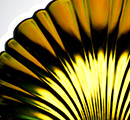
Stainless-steel surface treatment
-

Titanium surface treatment and photocatalyst
-
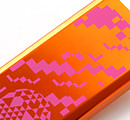
Aluminium surface treatment
-

Other metals
